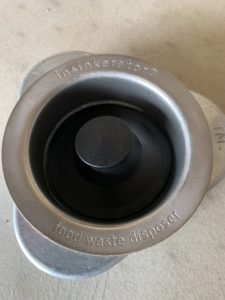Were you on the lookout for help about How to fix a pretty consistent leak from my garbage disposal?

Garbage disposals are necessary kitchen devices that help in throwing away food waste successfully. Nonetheless, a dripping garbage disposal can be an aggravating and messy trouble to manage. The good news is, several leaks can be fixed quickly with a couple of straightforward steps. In this write-up, we will review how to deal with a leaking waste disposal unit efficiently.
Intro
Waste disposal unit are set up under cooking area sinks and are designed to shred food waste into smaller items, allowing it to pass through the pipes system conveniently. While these tools are usually reputable, leaks can happen gradually because of deterioration, loosened connections, or damages to the system.
Common Causes of Leakages in Trash Disposals
Worn Seals and Gaskets
Seals and gaskets play a vital role in preventing water from leaking out of the waste disposal unit. Gradually, these parts can weaken, resulting in leaks around the disposal system.
Loose Links
The links in between the garbage disposal and the pipes system can become loose gradually, causing water to leak out throughout operation.
Fractures or Holes in the Disposal Unit
Physical damages to the waste disposal unit, such as fractures or openings in the real estate, can likewise cause leaks.
Determining the Source of the Leak
Prior to attempting to deal with a dripping garbage disposal, it is vital to determine the source of the leakage. This can generally be done via aesthetic evaluation or by conducting easy examinations.
Visual Examination
Inspect the waste disposal unit system thoroughly for any kind of indications of water leak. Pay very close attention to areas around seals, gaskets, and connection factors.
Checking for Leakages
One method to check for leaks is by running water through the disposal unit and looking for any type of noticeable indicators of leakage.
Tools and Materials Needed for Repairing a Leaking Waste Disposal Unit
Before beginning the repair work process, gather the required devices and products, consisting of a screwdriver, flexible wrench, plumbing professional's putty, substitute seals or gaskets, and epoxy or patching product for repairing cracks or openings.
Step-by-Step Guide to Fixing a Leaking Garbage Disposal
Switch off the Power
Prior to attempting any fixings, make certain that the power to the garbage disposal unit is turned off to avoid the risk of electric shock.
Situate the Leak
Recognize the exact area of the leak and figure out the reason.
Tighten Connections
Make use of a wrench to tighten up any kind of loosened connections between the disposal device and the pipes system.
Replace Seals or Gaskets
If the leak is due to used seals or gaskets, remove the old elements and replace them with brand-new ones.
Patching Fractures or Holes
For fractures or openings in the disposal system, use epoxy or an appropriate patching product to secure the broken area.
Testing the Waste Disposal Unit After Repair Work
Once the repair work is full, check the garbage disposal by running water via it to make sure that the leakage has been resolved.
Preventive Upkeep Tips to Stay Clear Of Future Leaks
To avoid future leaks, it is necessary to execute regular upkeep on your waste disposal unit. This consists of maintaining it tidy, avoiding putting non-food items or difficult items down the disposal, and regularly looking for leaks or various other concerns.
Verdict
Finally, repairing a dripping garbage disposal is a relatively straightforward procedure that can be completed with standard tools and products. By following the steps outlined in this article and practicing preventative maintenance, you can keep your waste disposal unit in good working condition and prevent pricey repair services in the future.
What to Do About a Leaking Garbage Disposal
A leaking garbage disposal often goes unnoticed until you confront a sopping cabinet, a foul-smelling puddle, or an audible drip-drip-drip from the unit. The fix can be frustrating, too, because the leak can stem from a number of components in the system. Fortunately, with a little sleuthing, you can zero in on the leak and—depending on the exact location—stop the icky oozing and repair the component that caused it. Worst case scenario, if it turns out that the garbage disposal must be replaced, installing a new one is a reasonable do-it-yourself task for those with basic plumbing skills. Read on to keep the cash you’d otherwise hand over to a pro.
Prepare to find the leak
Prior to testing the garbage disposal for leaks, unplug it at the wall outlet and turn off the power from the breaker box to prevent electrical shock. Then insert a watertight sink stopper into your sink drain and wipe the unit dry with a clean cloth. In any handy container, mix a few drops of food coloring into a few cups of water, and pour the dyed water onto the sink stopper to help you locate the leak.
Investigate the source
- the top, where the disposal meets the sink drain
- the side, where the dishwasher hose or main drain pipe connects to the disposal
- or the bottom of the unit
Inspect each of these locations while gliding a light-colored rag over the unit; the dyed water will readily show on the rag and reveal the location of the leak. If a leak isn’t immediately apparent, remove the sink stopper and pour a few more cups of dyed water down the sink drain, then check for leaks again. Leaks near the top of the unit are more likely to show themselves while the sink is plugged, while side and bottom leaks are more noticeable while the sink is unplugged.
The metal sink flange that sits directly inside the sink drain is typically sealed around the top with plumber’s putty (a clay-like sealant) and then secured from under the sink with bolts. If the plumber’s putty deteriorates, or the bolts loosen, the flange can no longer form a watertight seal between the sink drain and the disposal—which could cause a leak at the top of the unit.
To reseal the leaky flange, you must first detach the garbage disposal. Start by loosening the screws securing the main drain pipe to the disposal, then loosen the screws in the metal clamp securing the dishwasher hose to the disposal and detach the drain pipe and dishwasher hose from the disposal. Loosen the screws in the mounting ring that connects the disposal to the metal mounting assembly beneath the sink, then pull down the disposal and carefully set it on a clean, dry surface. Loosen the bolts in the mounting assembly with a wrench, then pull down the mounting assembly and set it near the disposal.

As an enthusiastic reader on Why Is My Garbage Disposal Leaking From the Bottom?, I imagined sharing that excerpt was really helpful. Do you know someone else who is very much interested in Why Is My Garbage Disposal Leaking From the Bottom?? Be sure share it. Thanks so much for going through it.
Call Today
Comments on “Handy Methods for Fixing a Dripping Garbage Disposal”